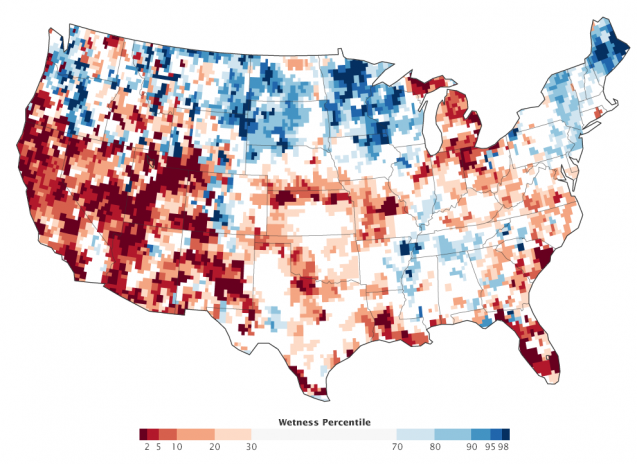Bridging the gap between science and policy for water security

To tackle the challenge of how to effectively educate important stakeholders about ground water in the United States, 11 graduate students from the Earth Institute and School of International and Public Affairs MPA in Environmental Science and Policy program, advised by Nancy Degnan, adjunct faculty at SIPA, were asked to recommend a strategy to improve scientific literacy among policymakers and investors. Working with Upmanu Lall, director of the Columbia Water Center and their client, Circle of Blue, the team came up with a thematically and regionally focused approach. The students won SIPA's Leous/Parry Award for Progressive Sustainability for their work, and their recommendations are already being implemented.
VICE, the acclaimed investigative reporting series on HBO, recently dedicated an episode to the dire situation of water security both globally and in the United States. Climate change, unsustainable development, population growth and bad water management is taking its toll and crippling weak economies, such as in Venezuela and Zambia. It is clear that in more affluent nations, like the United States, water issues cannot be ignored for much longer. Researchers and students at the Columbia Water Center, Earth Institute have been spending months collecting data, analyzing and evaluating the conditions of U.S. water resources under the leadership of Lall, principal investigator for the National Science Foundation-funded project, America's Water: The Changing Landscape of Risk, Competing Demands and Climate. As part of the education and outreach component of the project, students from the MPA program designed a strategy for groundwater education, with an accompanying report, for their graduate capstone experience called the Workshop in Applied Policy Analysis. The goal of the education strategy revolved around one driving question: How do we communicate scientific findings effectively and to the right people? As one of the experts interviewed in the VICE episode noted: "few people know too much, and most people know too little." And, as Lall himself has said, "Water is the incipient issue of 21st century sustainable development."
The report entitled, A Strategy for Education on the Critical Issues of U.S. Groundwater for Policymakers and Investors was pro bono and had as a "real-world client" the Michigan-based nonprofit Circle of Blue. Also a part of the NSF America's Water research project, Circle of Blue, comprises journalists who are dedicated to making scientific information on water accessible to all stakeholder groups. Policymakers and investors are key, which is why the students focused their work to build awareness for these groups. Throughout the semester students grappled with questions. Who are the relevant policymakers and investors we want to educate about groundwater? What are the gaps in knowledge that need to be bridged? How best can one educate such a group of accomplished individuals?
In order to answer these questions, the students conducted a semester of research. They read groundwater related science, interviewed 28 experts from different business sectors, academia and NGOs, identified existing educational materials about groundwater, studied methods of adult education, determined misconceptions surrounding groundwater and disentangled the complex relationships between water, agriculture, energy and industry. The knowledge acquired through this research culminated into the report the students handed over to Circle of Blue. The report contains a strategy for education and proposes a pilot education program.
In the education strategy, students emphasize the need for integration of resources on U.S. groundwater, in keeping with the integrated and comprehensive approach used by the America's Water research group. The strategy also includes implementation of an accessible go-to platform where stakeholders can obtain reliable information on groundwater, whether scientific or regulatory. Another key component of the education strategy is infusing an interdisciplinary understanding of groundwater stresses. Environmental problems and solutions embody rigorous science, yet scientists usually aren't the individuals with the decision-making power. Hence, the pilot program for policymakers and investors proposed in the report employs an interdisciplinary approach. It is comprised of themes cross-referencing different disciplines, starting with the science, moving on to regulation, pricing and risk, and ending with an interactive session for discussing solutions. In addition to the strategy, the report describes a myriad of resources to facilitate implementation: a comprehensive list of organizations working on groundwater research and education, a list of recurring conferences, tools for communicating information, human resources necessary to carry out the strategy and more.
In May 2016, Circle of Blue held a virtual town hall where the students presented their work to stakeholders, and brainstormed ideas to move forward with the education program. The Columbia Water Center continues its collaboration with Circle of Blue and supplies the scientific expertise to realize the vision of the award-winning strategy of education on America's Water.
Provided by Earth Institute, Columbia University
This story is republished courtesy of Earth Institute, Columbia University: blogs.ei.columbia.edu/ .


















